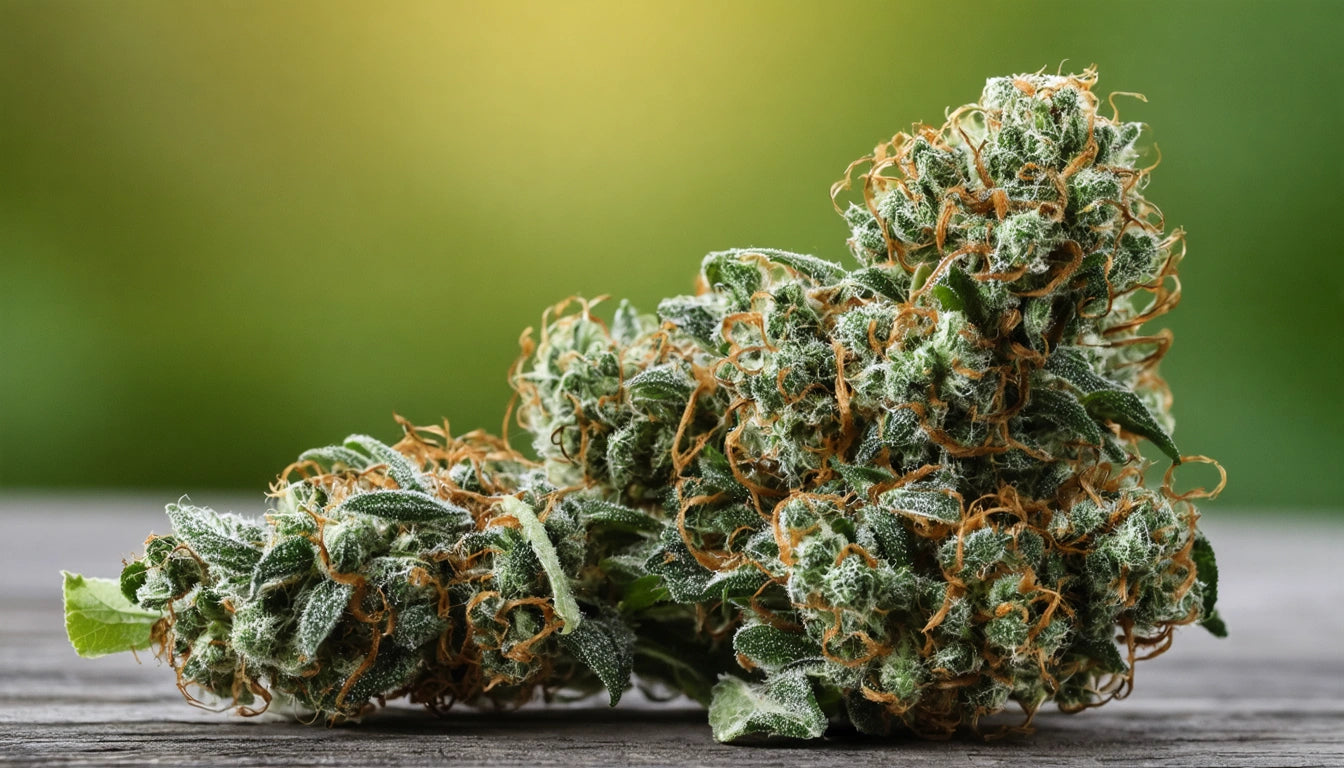Table of Contents
Top Cannabis Strains for Effective Pain Relief
Pain management remains one of the most common reasons people turn to cannabis. Whether dealing with chronic back pain, nerve pain, or inflammatory conditions, finding the best pot strain for pain can significantly improve quality of life. Research continues to validate what many patients have experienced firsthand: certain cannabis varieties offer meaningful relief where conventional medications may fall short or cause unwanted side effects.
Understanding Cannabis for Pain Management
Cannabis works with the body's endocannabinoid system to modulate pain perception and inflammatory responses. According to research on marijuana's pain-alleviating properties, different cannabinoid and terpene profiles affect various pain types differently.
The primary compounds responsible for pain relief include:
- THC (tetrahydrocannabinol): Provides analgesic effects and may help with neuropathic pain
- CBD (cannabidiol): Offers anti-inflammatory benefits without psychoactive effects
- CBG (cannabigerol): Shows promise for inflammatory conditions
- Myrcene: A terpene with sedative and muscle-relaxant properties
- Beta-caryophyllene: A terpene that directly activates CB2 receptors involved in pain regulation
When selecting the best pot for pain relief, consider both the cannabinoid content and terpene profile, as these work synergistically in what's known as the "entourage effect."
Indica-Dominant Strains for Pain Relief
Indica-dominant strains typically provide stronger body effects that can help with pain management, especially for nighttime use when sleep disturbances compound pain issues.
Granddaddy Purple
This classic indica delivers profound physical relaxation, making it one of the best pot strains for back pain. Its high myrcene content contributes to its muscle-relaxant properties, while its moderate THC levels (typically 17-24%) provide effective pain relief without overwhelming effects.
Northern Lights
Consistently rated among the best pot for nerve pain, Northern Lights combines numbing body effects with mental calm. Its resinous buds contain compounds that may help quiet overactive nerve signals while promoting restful sleep.
9 Pound Hammer
For severe pain that prevents sleep, 9 Pound Hammer offers potent relief. This high-THC strain (often exceeding 20%) produces strong sedative effects that can help patients with intractable pain find respite.
Sativa and Hybrid Options for Daytime Pain Management
For patients needing pain relief while maintaining functionality during the day, certain sativa and balanced hybrid strains offer better options than heavily sedating indicas.
Harlequin
With a balanced THC:CBD ratio (usually 5:2), Harlequin provides pain relief with minimal intoxication. This makes it ideal for daytime use and is considered by many to be the best pot for pain management during working hours.
Jack Herer
This uplifting sativa helps manage pain while providing mental clarity and energy. Its unique terpene profile offers anti-inflammatory benefits without the heavy sedation that might interfere with daily activities.
Blue Dream
As a balanced hybrid, Blue Dream delivers body relaxation alongside gentle cerebral stimulation. Its moderate THC content makes it accessible for pain patients who need to remain functional, as explored in this guide to anti-inflammatory cannabis strains.
Best Pot Strains for Specific Pain Conditions
For Back Pain
Back pain often involves both muscle tension and inflammation. The best pot strain for back pain typically combines muscle-relaxant properties with anti-inflammatory effects. ACDC, with its high CBD content, and OG Kush, with its balanced effects, are frequently cited as effective options according to research on cannabis for back pain relief.
For Nerve Pain
Neuropathic pain responds differently to cannabis than inflammatory pain. Strains high in both THC and the terpene linalool, such as LA Confidential and Purple Kush, are often considered the best pot for nerve pain due to their ability to modulate nerve signaling pathways.
For Inflammatory Pain
Conditions like arthritis benefit from strains with significant CBD content. Cannatonic and Critical Mass provide anti-inflammatory effects without heavy sedation, making them suitable for regular daytime use.
Consumption Methods for Optimal Pain Relief
The method of consumption significantly impacts how effectively cannabis addresses pain:
- Inhalation (smoking or vaporizing): Provides fastest onset (within minutes) but shorter duration (2-4 hours)
- Sublingual tinctures: Offer relatively quick onset (15-45 minutes) with moderate duration (4-6 hours)
- Edibles: Slow onset (30-90 minutes) but longest duration (6-8+ hours), ideal for overnight pain management
- Topicals: Localized relief without psychoactive effects, perfect for specific areas of pain
For consistent relief, many patients combine methods, using fast-acting inhalation for breakthrough pain while maintaining baseline relief with longer-acting forms. This approach is detailed in this exploration of THC options for pain management.
Storage Considerations for Preserving Therapeutic Properties
The pain-relieving properties of cannabis depend largely on its chemical composition remaining intact. Improper storage can degrade cannabinoids and terpenes, reducing therapeutic benefits. To maintain potency:
- Store in airtight, light-resistant containers
- Maintain optimal humidity levels between 59-63% using specialized humidity control solutions
- Keep at cool temperatures (65-70 °F) away from heat sources
- Avoid exposure to oxygen, which accelerates degradation
Many patients report that properly stored cannabis maintains its pain-relieving properties longer and provides more consistent effects. This is particularly important for medical users who rely on specific strains for their unique therapeutic profiles.
Finding the best pot for pain relief often requires some experimentation, as individual responses vary based on pain type, personal biochemistry, and tolerance levels. Working with knowledgeable dispensary staff and healthcare providers can help narrow down the options and develop an effective, personalized approach to cannabis-based pain management.











Leave a comment
All comments are moderated before being published.
This site is protected by hCaptcha and the hCaptcha Privacy Policy and Terms of Service apply.